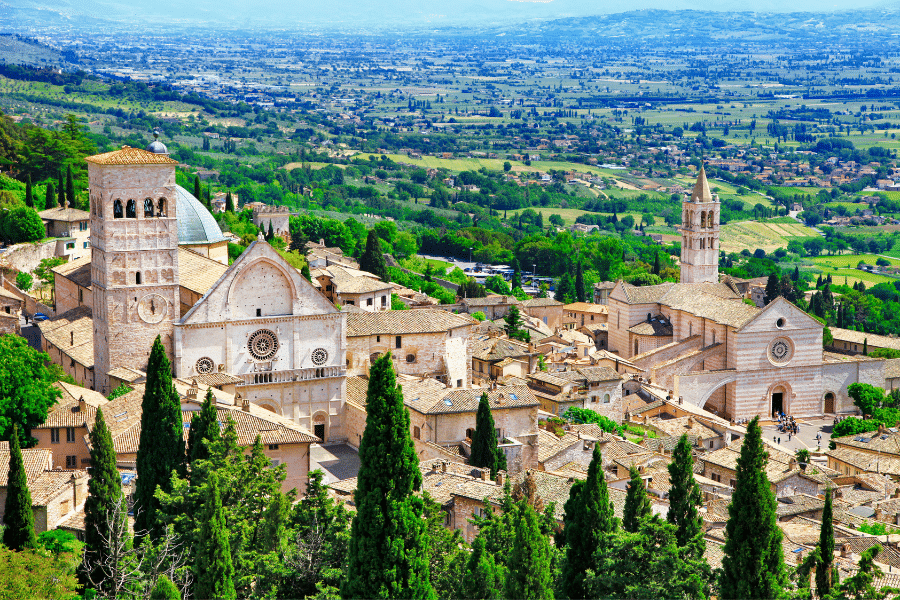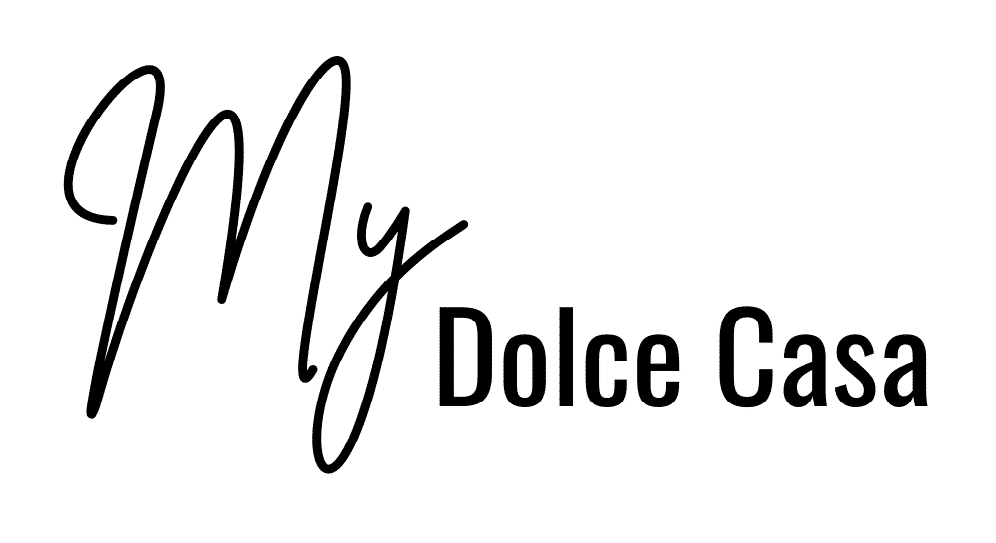Confused about Italian real estate terms? Struggling to understand what’s what when it comes to buying a home or renting an apartment in Italy?
So, you’ve decided to buy property in Italy. Bravo! Maybe you’ve watched “Under the Tuscan Sun” too many times or you’ve fallen in love with the idea of sipping espresso on your own Roman balcony. Whatever the reason, I salute your courage.
As an American who has attempted to navigate the labyrinth that is the Italian real estate market, I can assure you it’s quite the adventure. Picture me: a bewildered midwesterner, armed with a phrasebook and a questionable understanding of the metric system, diving headfirst into a world of “palazzi” and “pied-à-terre.”

Let me tell you, I thought I was prepared. After all, how different could it be from buying a house in the good ol’ U.S. of A? Oh, how wrong I was. I quickly found myself lost in a sea of unfamiliar terms, trying to differentiate between a “masseria” and a “trullo,” and wondering why my dream apartment was called a “monolocale” and not a “studio.” It felt like I needed a translator, a local guide, and a strong espresso just to keep up.

But fear not, dear reader! I’ve stumbled, bumbled, and fumbled my way through the process so you don’t have to. Here’s a guide to the essential Italian real estate terms, explained in a way that even we confused, metric-averse Americans can understand. Grab your notebook, buckle up, and let’s dive into the delightful chaos of Italian real estate!
Common Homebuying Real Estate Terms in Italy, Decoded
- Purchase Agreement (Compromesso): In Italy, a "compromesso" or "preliminare di vendita" is a preliminary agreement binding both parties to the sale, much like a purchase agreement in the US. It includes key terms and conditions of the sale.
- Closing Costs (Costi di Chiusura): "Costi di chiusura" in Italy include fees and expenses such as notary fees, taxes, and registration costs, akin to the closing costs in the US that buyers and sellers pay at the completion of a real estate transaction.
- Mortgage (Mutuo): A "mutuo" in Italy is a loan used to purchase property, with the property serving as collateral, similar to a mortgage in the US. Both involve repayment over a set period with interest.
- Down Payment (Caparra): The "caparra" is the initial payment made when purchasing a property in Italy, similar to a down payment in the US. This payment is typically a percentage of the purchase price and shows the buyer's commitment.
- Deed (Atto di Proprietà): The "atto di proprietà" is the legal document that transfers ownership of the property from the seller to the buyer, similar to a deed in the US. It is essential for proving ownership.
- Agenzia Immobiliare (Real Estate Agency): An "agenzia immobiliare" in Italy is a company or agent that assists with buying, selling, or renting properties, similar to a real estate agency in the US. They provide market expertise and facilitate transactions.
- Notaio (Notary Public): A "notaio" in Italy is a legal professional who oversees the signing of important documents, ensuring their authenticity. This role is similar to a notary public in the US but with more extensive legal responsibilities.
- IMU (Imposta Municipale Unica) (Property Tax): The "IMU" is a municipal property tax paid by property owners in Italy, similar to property taxes in the US. It funds local services and infrastructure.
- APE (Attestato di Prestazione Energetica) (Energy Performance Certificate): The "APE" in Italy is a document that rates the energy efficiency of a property, similar to energy efficiency certifications in the US. It is required for property transactions and rentals.
- Catasto (Land Registry): The "catasto" is Italy's public register of property ownership and details, akin to the land registry or county recorder's office in the US. It maintains records of property boundaries, ownership, and value.
- Rogito (Deed of Sale): The "rogito" is the final deed signed at the notary’s office to transfer property ownership in Italy, similar to the deed of sale in the US. It legally completes the property transaction.
- Piano Casa (Home Improvement Plan): "Piano casa" refers to government incentives for home improvements and renovations in Italy, similar to certain federal or state programs in the US that support home upgrades.
- Pertinenza (Appurtenance): A "pertinenza" in Italy refers to additional parts of the property, like a garage or garden, associated with the main property. This is similar to appurtenances in the US, which are additional property elements that are considered part of the main property.

Property Types in Italy and Their American Equivalent
- Casa Unifamiliare (Single-Family Home): A detached home designed for one family, offering privacy and usually featuring a yard.
- Appartamento (Apartment): Units within larger buildings, ideal for urban living with shared amenities.
- Duplex (Duplex): Buildings with two separate units, each with its own entrance, offering a balance between apartment living and single-family homes.
- Villetta a Schiera (Townhouse): Row houses sharing walls with neighbors, providing a blend of community living and private space.
- Condominio (Condominium): Individually owned units within a building with shared common areas, similar to US condos.
- Pied-à-terre: Small secondary residences in cities, convenient for occasional stays.
- Villa: Large, detached homes often with gardens, synonymous with luxury and space.
- Rustico/Casale: Country houses or farmhouses, often in need of renovation, offering rustic charm.
- Masseria: Large farmhouses or estates typical in southern Italy, especially Puglia, often renovated into luxurious homes.
- Trullo: Unique stone huts with conical roofs found in Apulia, offering distinctive, traditional living spaces.
- Palazzo: Grand historical buildings, often divided into apartments, found in cities like Rome and Florence.
- Bifamiliare (Two-Family House): Houses divided into two separate units, ideal for extended families or rental opportunities.
- Loft: Open-plan apartments, often in converted industrial buildings, popular for their spacious and modern design.
- Attico (Penthouse): Luxury top-floor apartments, often with large terraces and stunning views.
- Monolocale (Studio Apartment): Single-room apartments combining living, sleeping, and kitchen areas, ideal for singles or couples.
- Bilocale (Two-Room Apartment): Apartments with separate living and bedroom areas, providing more space than studios.
- Trilocale (Three-Room Apartment): Apartments with two bedrooms and a living room, suitable for small families.
- Quadrilocale (Four-Room Apartment): Larger apartments with three bedrooms and a living room, ideal for larger families.
- Casa di Campagna (Country House): Homes in rural areas, often with land for gardens or small farming.
- Residence: Complexes of furnished apartments with shared amenities, often used for vacations or temporary stays.
- Castello (Castle): Historic castles converted into luxury residences, offering a unique living experience.
- Chalet: Wooden houses in mountainous regions, often used as vacation homes, providing cozy retreats.

Real Estate Terms in Italy Related to Property Size and Layout
- Square Footage (Metri Quadri): Property size is measured in square feet in the US, while in Italy, it is measured in square meters, or "metri quadri (m2)." Understanding this difference is crucial when comparing property sizes between the two countries.
- Bedroom (Camera da Letto): A "camera da letto" in Italy is a room used for sleeping, equivalent to a bedroom in the US. Both are essential parts of any residential property, providing personal space for occupants.
- Bathroom (Bagno): A "bagno" in Italy is a room containing a toilet and bathing facilities, similar to bathrooms in the US. Both countries consider bathrooms a critical feature of any home.
- Living Room (Soggiorno): The "soggiorno" is the main room in an Italian home for general use, comparable to the living room in the US. It is often used for family gatherings and relaxation.
- Kitchen (Cucina): A "cucina" in Italy is a room or area designated for cooking, similar to kitchens in the US. Both are central to home life, often serving as a place for meal preparation and social interaction.
- Attic (Soffitta): The "soffitta" in Italy is the space directly below the roof, used for storage or additional living space, similar to attics in the US. Both provide extra room for homeowners.
- Basement (Seminterrato): A "seminterrato" in Italy is the floor partly or entirely below ground level, similar to basements in the US. These spaces can be used for storage, living areas, or utility rooms.

A Renter's Guide to Renting Terms in Italy
- Lease Agreement (Contratto di Locazione): In Italy, a "contratto di locazione" is a rental agreement between the tenant and landlord, outlining the rental terms, similar to a lease agreement in the US.
- Security Deposit (Deposito Cauzionale): The "deposito cauzionale" in Italy is a sum of money paid by the tenant to cover potential damages, similar to a security deposit in the US. This deposit is typically refundable if no damages occur.
- Rent (Affitto): "Affitto" is the monthly payment made by the tenant to the landlord in Italy, similar to rent in the US. It covers the cost of occupying the property.
- Notice Period (Preavviso): The "preavviso" is the required time a tenant must give before ending the lease in Italy, similar to the notice period in the US. This period typically ranges from one to three months.
- Furnished Apartment (Appartamento Ammobiliato): An "appartamento ammobiliato" in Italy is a rental unit that includes furniture, similar to furnished apartments in the US. These units often come with shorter lease terms and higher rent.
- Unfurnished Apartment (Appartamento Vuoto): An "appartamento vuoto" in Italy is a rental unit without furniture, similar to unfurnished apartments in the US. These typically have longer lease terms compared to furnished units.
- Rent Control (Equo Canone): "Equo canone" in Italy refers to regulations that limit rent increases to ensure affordability, similar to rent control measures in the US.
- Tenant (Inquilino): An "inquilino" in Italy is the person renting the property, similar to a tenant in the US. Tenants have similar rights and responsibilities in both countries.
- Landlord (Proprietario / Locatore): The "proprietario" or "locatore" in Italy is the owner of the rental property, similar to a landlord in the US. Landlords have duties such as property maintenance and respecting tenant rights.
- Subletting (Subaffitto): "Subaffitto" in Italy refers to subletting, where a tenant rents out the property to another person. This usually requires the landlord's approval, similar to subletting in the US.
- Guarantor (Garante): A "garante" in Italy is a person who guarantees the tenant's lease obligations, similar to a cosigner in the US. The guarantor often needs to meet specific income criteria.
- Utility Bills (Spese di Utenze): "Spese di utenze" in Italy are additional costs for services like water, electricity, and gas, similar to utility bills in the US. These may be included in the rent or billed separately.
- Move-In Inspection (Verbale di Consegna): The "verbale di consegna" is an inspection of the property's condition before the tenant moves in, similar to a move-in inspection in the US. It helps avoid disputes over damages.
- Move-Out Inspection (Verbale di Riconsegna): A "verbale di riconsegna" in Italy is an inspection conducted when the tenant moves out, similar to a move-out inspection in the US. It ensures any damages beyond normal wear and tear are noted.
- Rental Insurance (Assicurazione Locativa): "Assicurazione locativa" in Italy is insurance that covers the tenant's personal property and liability, similar to renters insurance in the US. This insurance is often mandatory.


